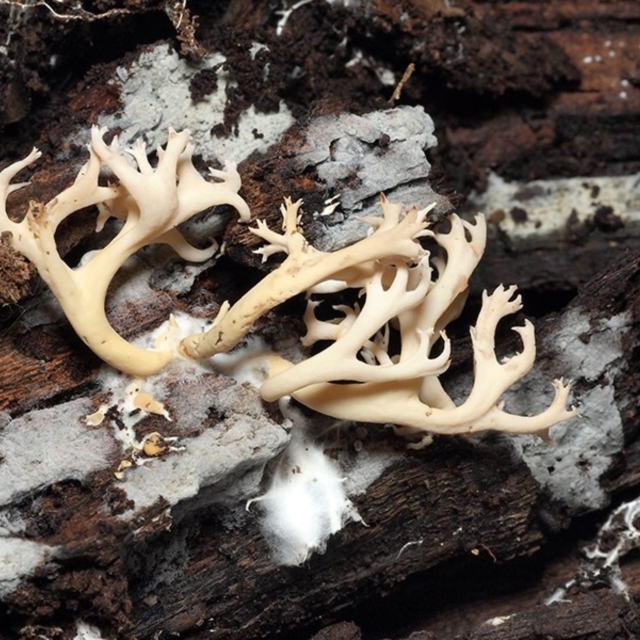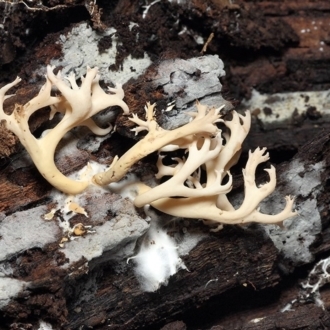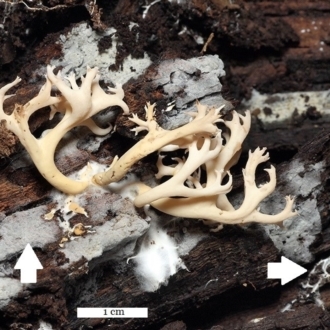Ramaria filicicola
The fruit body is branched and hence a member of the group known colloquially as ‘coral fungi’. The fruit body may be up to 10 centimetres tall and 6 in diameter. The branches, which terminate in pointed ends, are white near their apices but in lower areas the fruit body often has buff or ochraceous tints. The stem arises from a mycelial mat (which is somewhat fluffy and with a resemblance to a scruffy pad of cotton-wool) and associated rhizomorphs (bundles of hyphae) are present in the substrate and these look like white threads.
Spore print: yellow-brown.
The species was first described in 1940, based on specimens collected in Victoria and found on tree fern trunks (Dicksonia antarctica). The species epithet filicicola means ‘living on fern’. Since then it has been found growing on a wide variety of ground litter (without tree ferns needing to be present) that has originated from native or exotic trees.
For a more detailed discussion of this species see:
A. M. Young. (2014). Australian coralloid fungi IV – Ramaria filicicola, Muelleria, 33, 13-19.
Queensland Mycological Society website at - http://qldfungi.org.au/wp-content/uploads/2014/04/Ramaria-filicicola.pdf
Ramaria filicicola is listed in the following regions:
Species information
- Ramaria filicicola Scientific name
- Common name
- Not Sensitive
- Local native
- Non-Invasive
- Machine learning
Follow Ramaria filicicola
Receive alerts of new sightings
Subscribe








